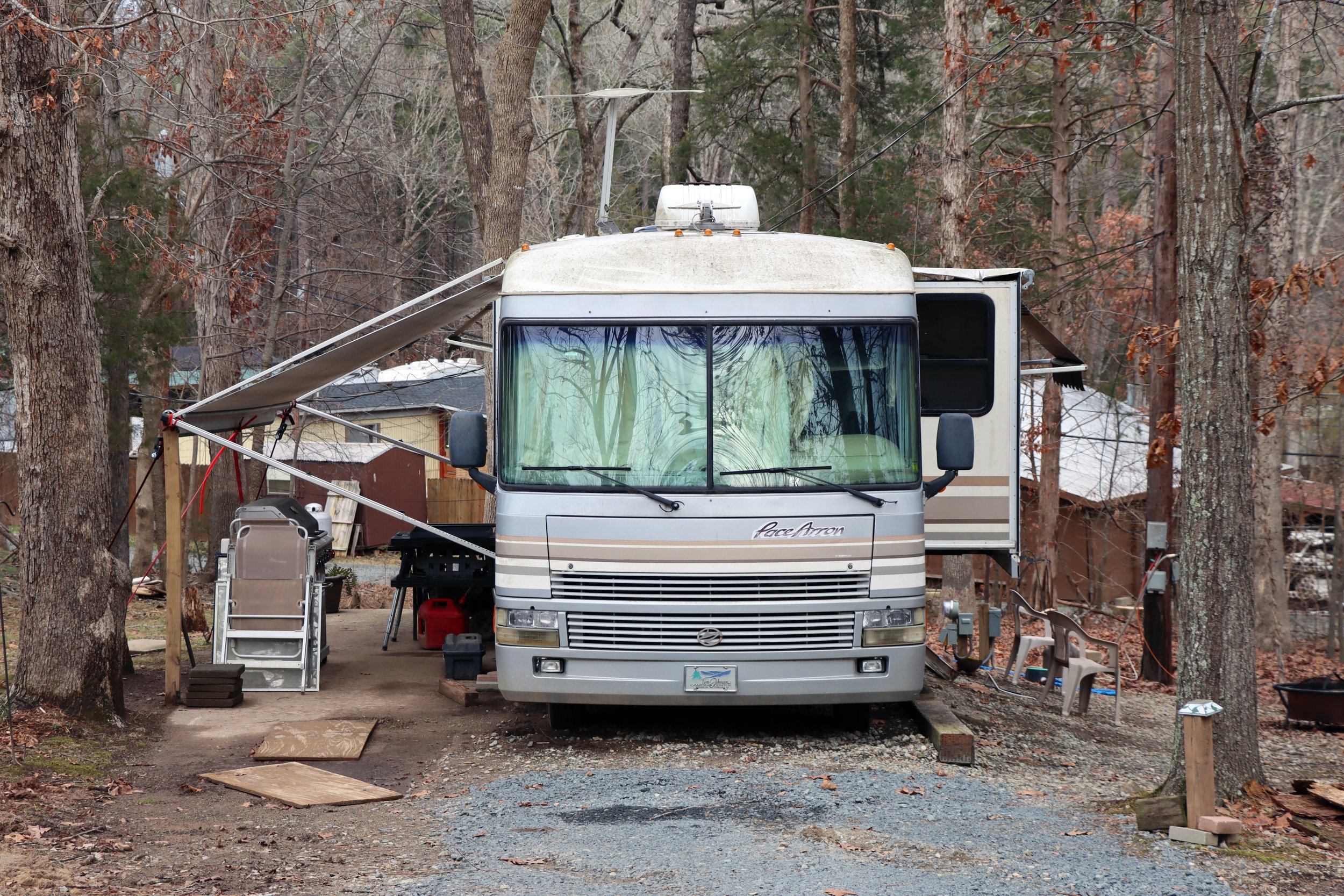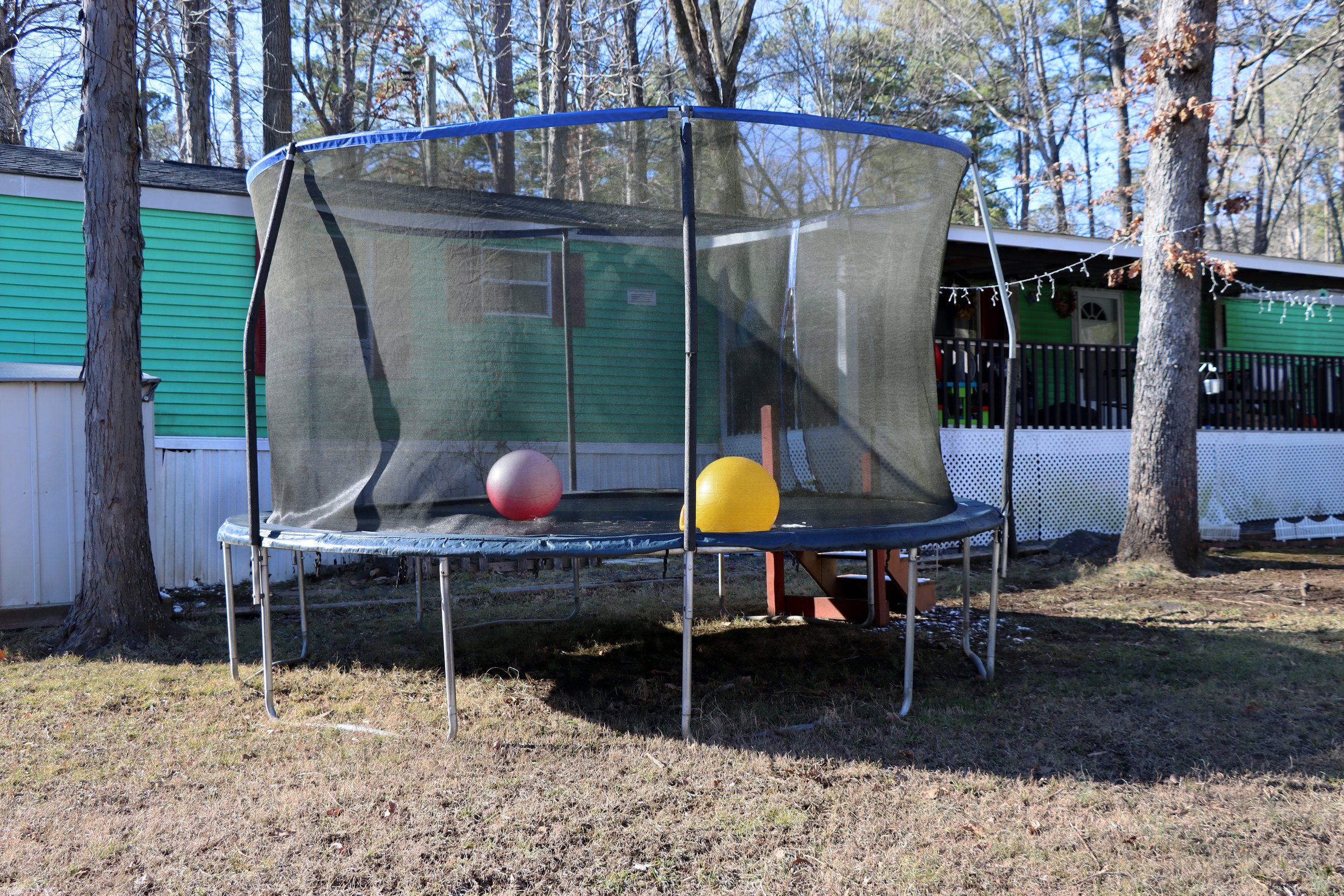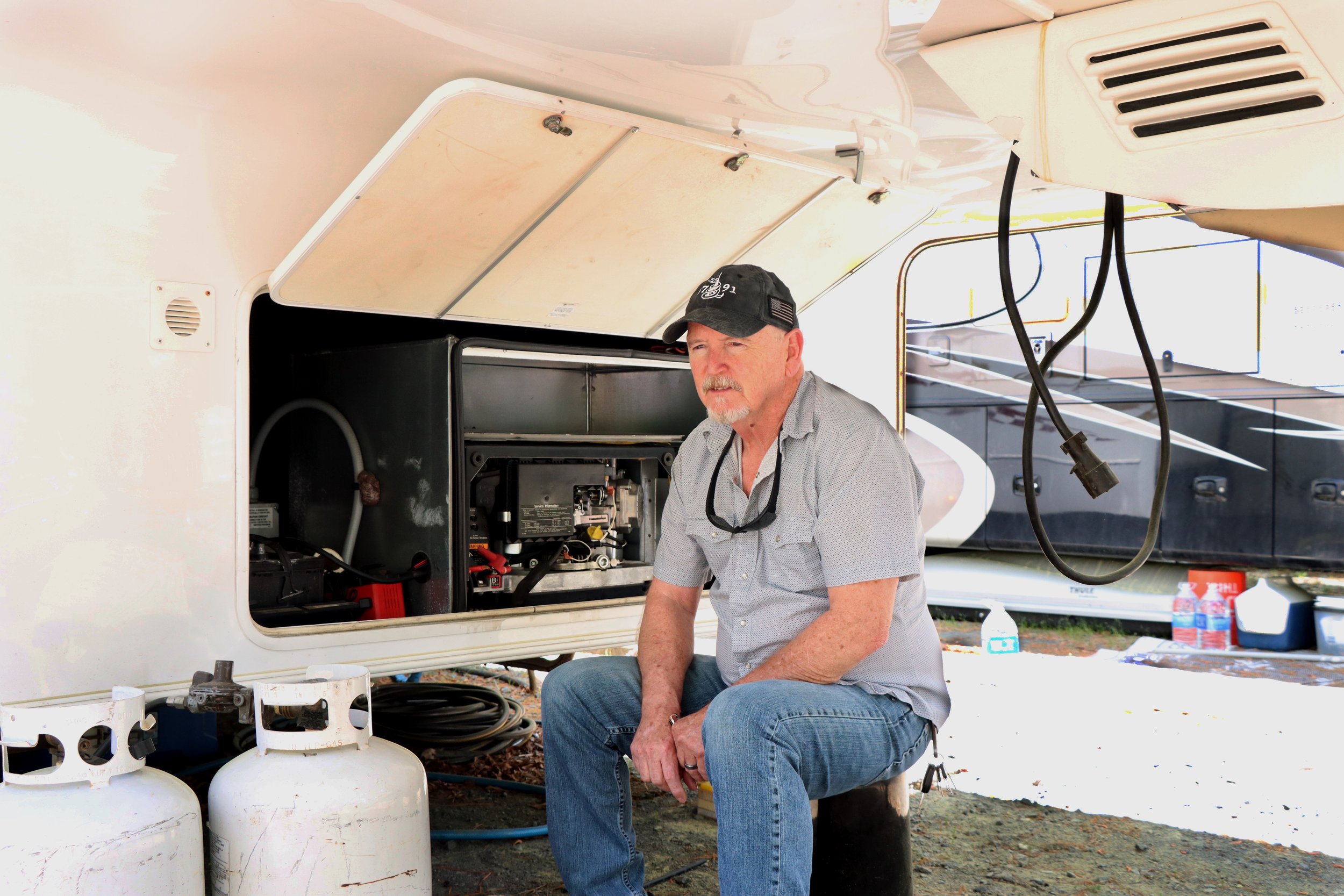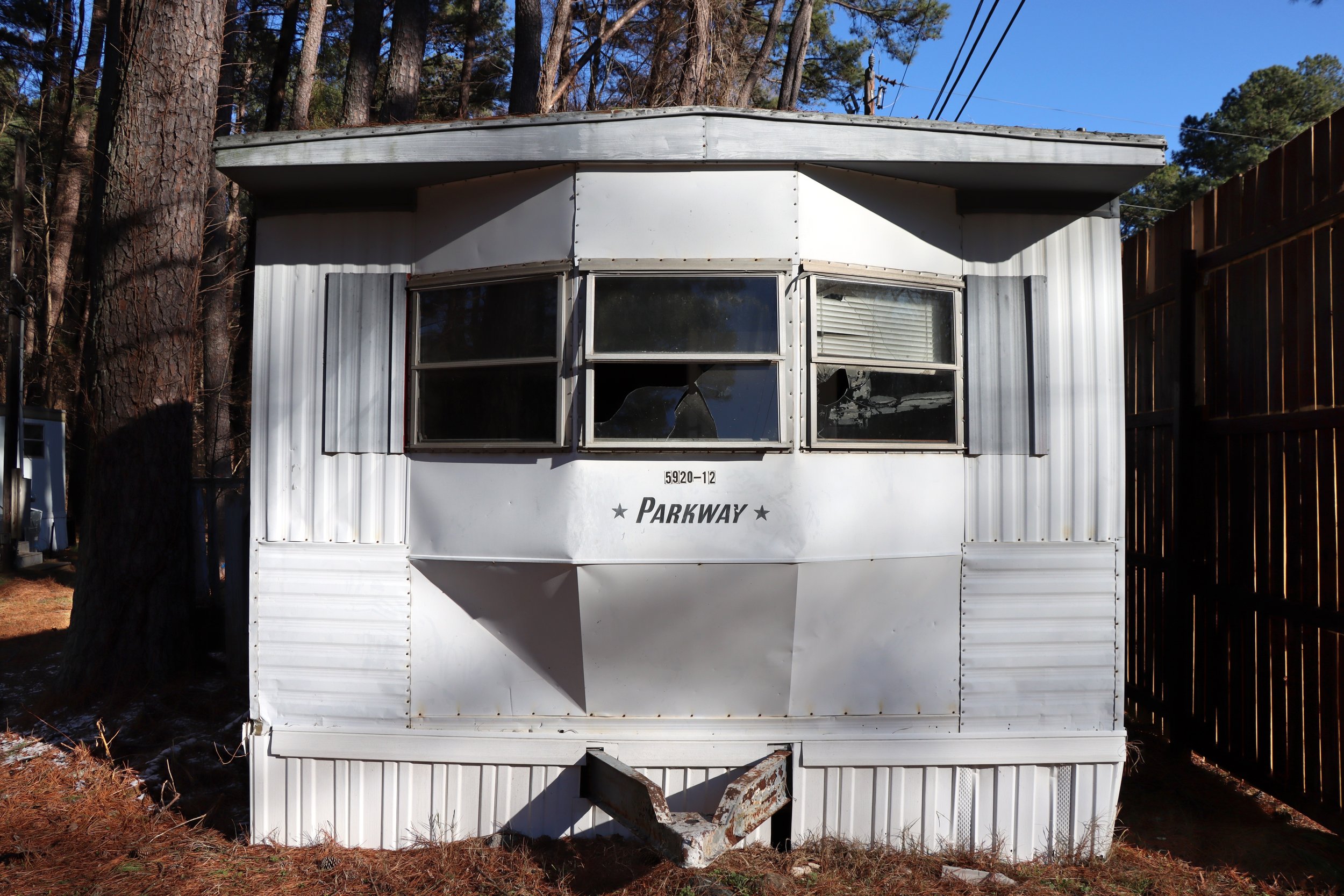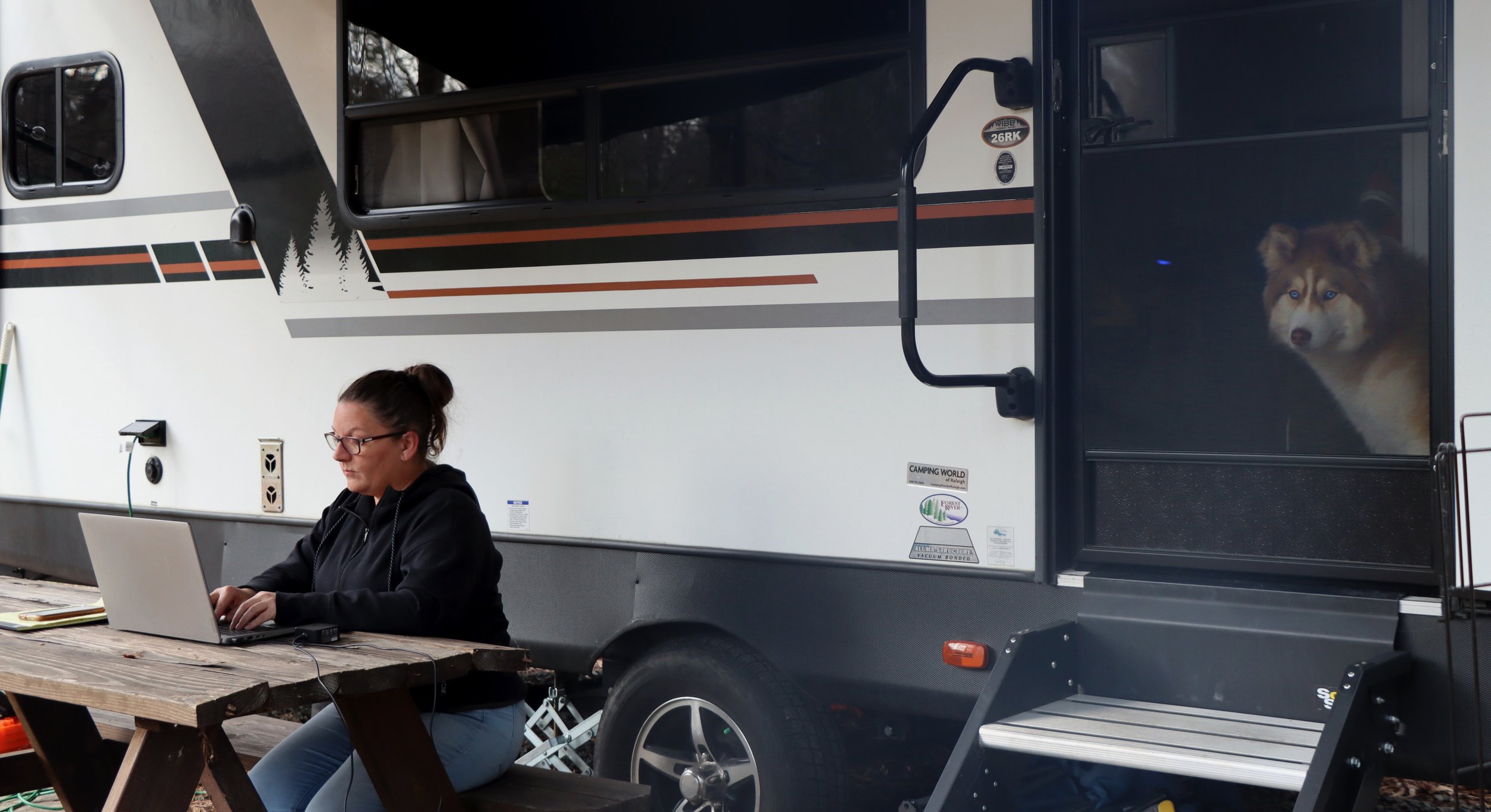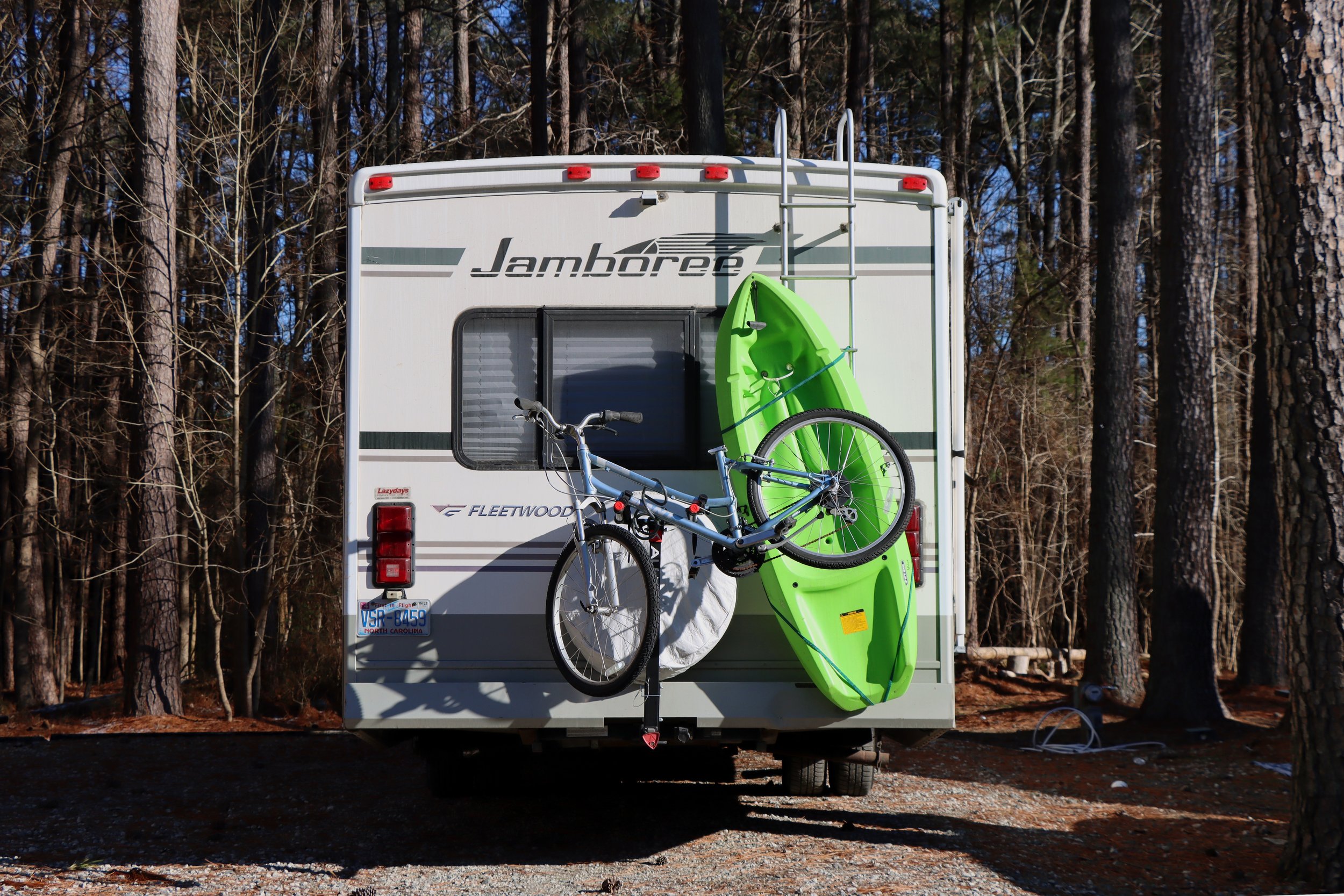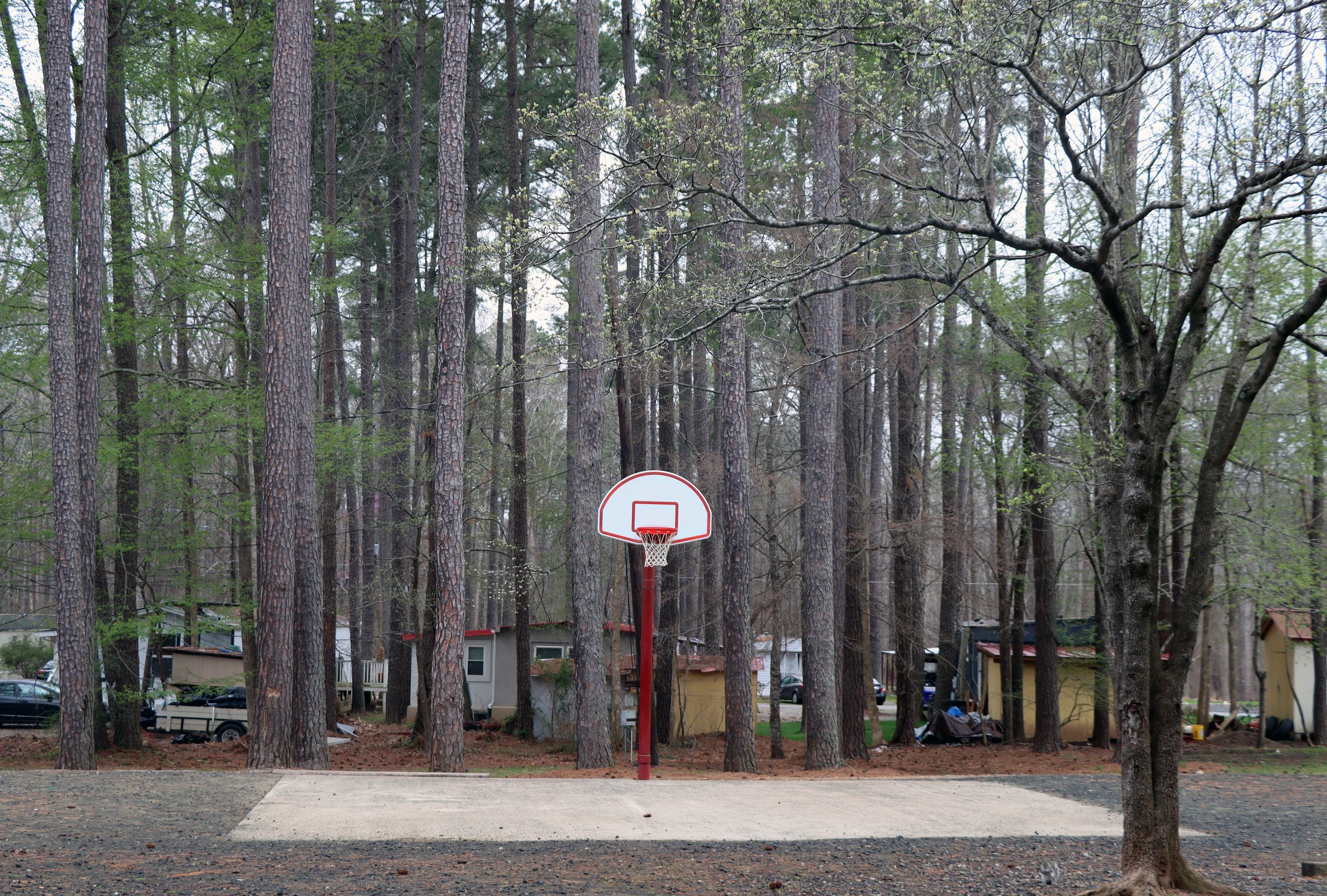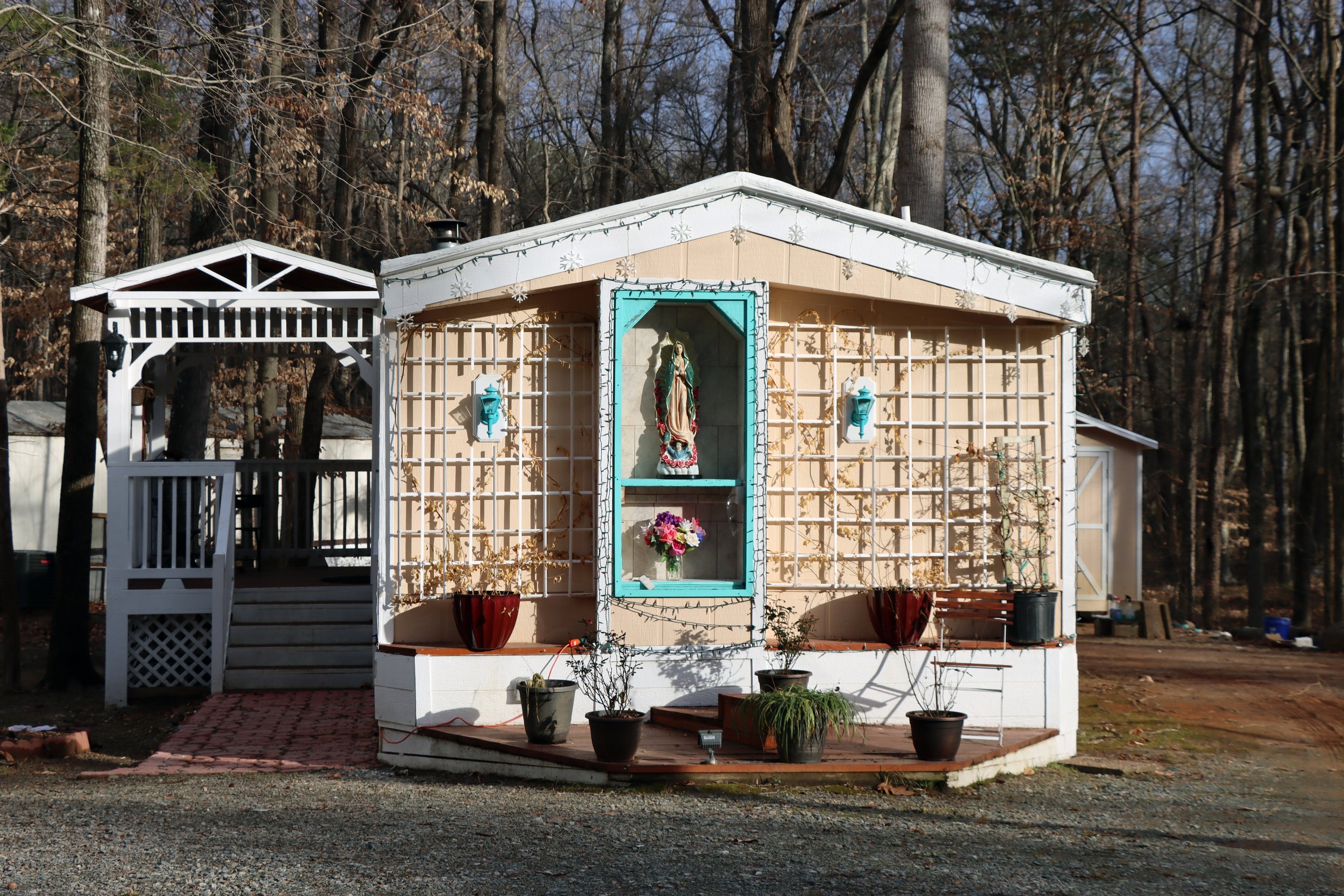Inside the Trailer Park

The words house and home are often used interchangeably. Most would consider them synonyms. But alas, there is a fundamental difference between the two terms. That difference is important to residents at the Triangle RV Park just off Wilkins Drive in Durham, North Carolina.
This collection of photographs includes both landscapes and portraits of the many Triangle Park residents who welcomed me into their personal spaces over the course of four months: Andrea, Luz, Randi, Shannon, Edward, Lucia, Shane, and Jissela. In documenting them and their homes, I hope to bring their stories into the spotlight, and introduce viewers to a different way of living.
Life on Wilkin’s Drive is quiet. In the winter, snow accumulates on its banks. In the spring pine needles and stray branches litter the path, and the once black asphalt takes on a yellow hue from a thin pollen coating. On sunny afternoons, children ride their bikes back and forth across the road and middle-aged couples take their overly energetic dogs on walks. At night, string lights keep the park aglow and the smell of burning charcoal fills the air.
The cost of living at Triangle Park is $45 a day or $250 a week. Monthly plans are subject to negotiation. Amenities include an on-site laundry house with four machines, limited free Wi-Fi with enough bandwidth to search the web but not stream content, and a one room wooded office that’s almost always locked and empty. Full hookups include water and electricity. There’s no bath house, dump station, or propane station.
There are around 100 trailers, RVs, and mobile homes at Triangle Park at any given time. Residents come and go constantly, and parking slips rarely stay empty for more than a few days. There’s only a handful of feet between each home. Sometimes the in between spaces are lined with pine trees or shrubs, but more often the windows of one trailer look directly into the windows of another.
Residents of the Triangle Park are both racially and ethnically diverse.
Some were born and raised in North Carolina while others immigrated from outside the United States.
Some live alone while others live with family—and extended family.
Some residents have been living at the park for nearly a decade. Others are merely passing through.
Some work from their parking slip while others commute. Some don’t work at all.
Some are in between places, some are on vacation, and some are undergoing treatment at the nearby Duke hospital.
Everyone has a unique story.
The Triangle Park is at once temporary and permanent, crowded and isolated—filled with houses and homes and everything in between.

